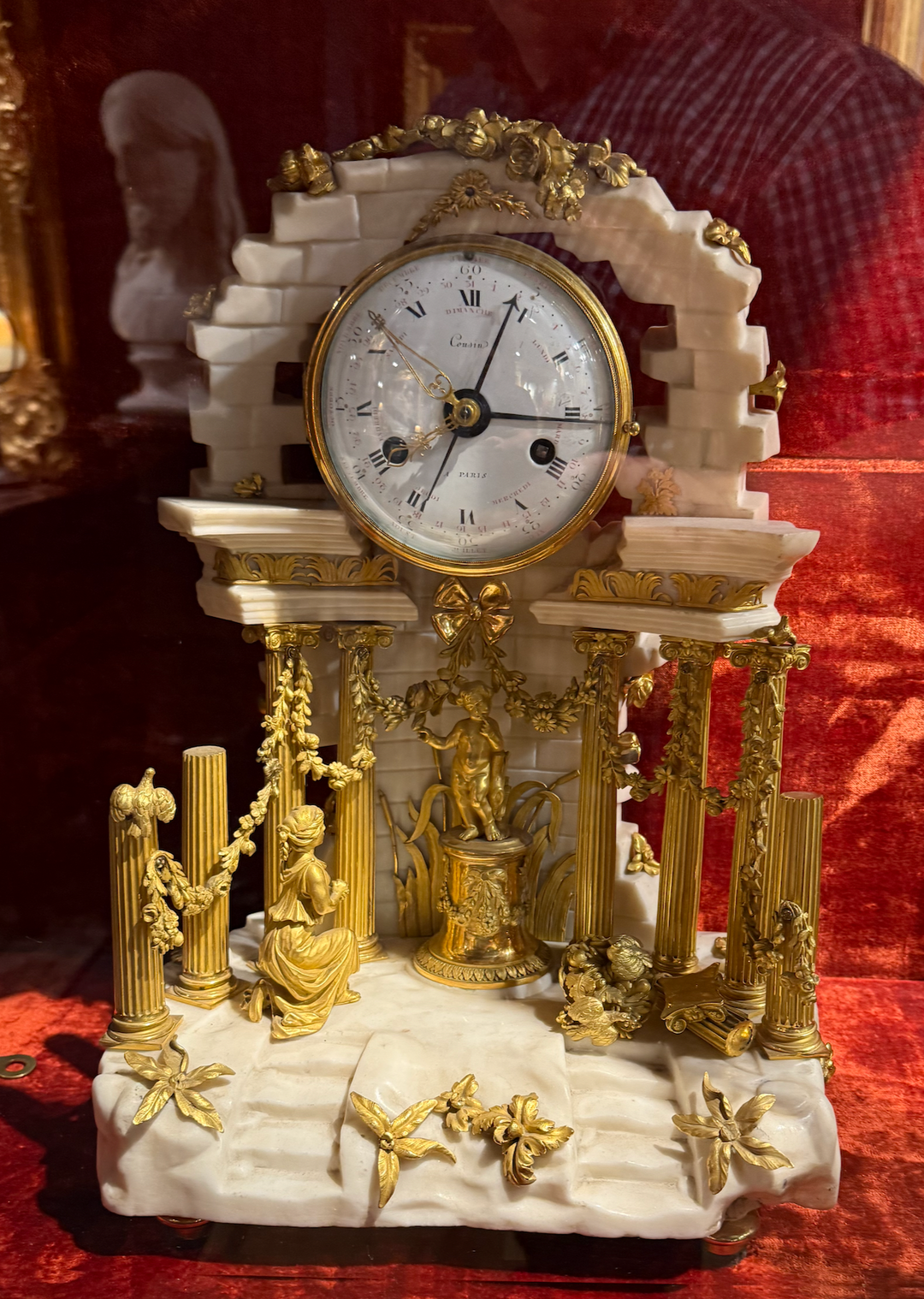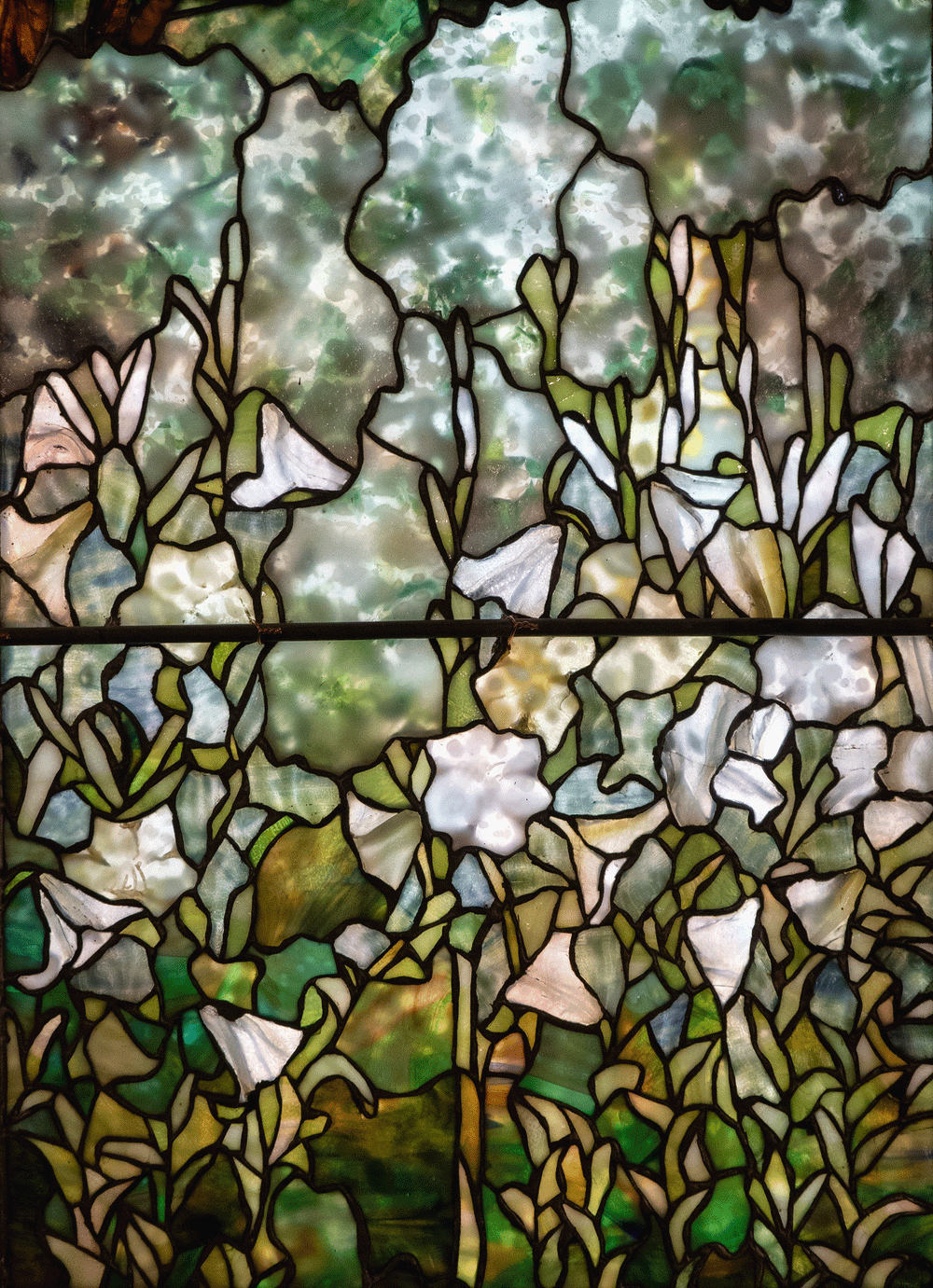
18th Century Mantel Clock with Allegorical Ruins
Mantel Clock with Allegorical Ruins
Joseph-Simon Cousin (French, active c. 1778–1800)
Paris, c. 1780
White marble, gilt bronze, and enamel
Height: 18 in.
This striking mantel clock by the esteemed horloger Joseph-Simon Cousin features a complex allegorical scene rendered in white marble and finely chased gilt bronze. The dial, marked “Cousin à Paris,” incorporates both Roman and Arabic numerals, as well as calendar and day-of-the-week functions—a sophisticated innovation of late 18th-century French clockmaking.
The architectural setting evokes a neoclassical ruin, adorned with garlands, Corinthian columns, and allegorical figures, possibly representing Wisdom or Virtue and the Arts. The clock not only reflects Cousin’s technical mastery but also the Enlightenment fascination with antiquity, decay, and moral reflection.
Joseph-Simon Cousin trained under the respected clockmaker Pierre-Laurent Gautrin and became a master in 1778. He was later appointed Horloger de Monseigneur le Comte d’Artois, brother of King Louis XVI. Cousin’s clocks are celebrated for their mechanical complexity, refined ornamentation, and elegant design, often commissioned by France’s elite during the reign of Louis XVI.



